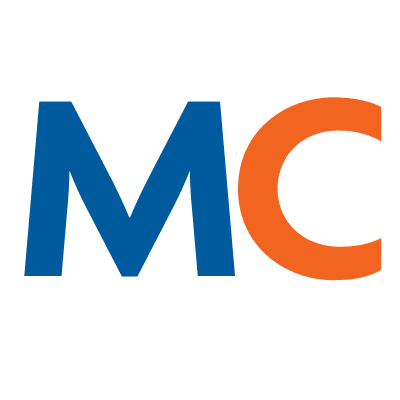- Solutions
- Solutions
- Home Health
- Hospice
- Life Plan Community
- Palliative Care
- Private Duty
- Senior Living
- Skilled Nursing
- Skilled Nursing
- Skilled Nursing Software
- Advanced Insights
- Customer relationship management
- Data and analytics
- Financial & operations management
- Marketing
- Nutrition management
- Referral management
- Regulatory compliance
- Retail management
- Resident engagement
- Revenue cycle management
- Skilled nursing interoperability
- Partners
- Blogs
- Resources
- About
- User Conference

OASIS-E regulatory changes for 2023
The new OASIS-E assessment is effective on January 1, 2023. It comes with major revisions that standardize data across post-acute care settings to allow the Centers for Medicare and Medicaid Services (CMS) to uniformly collect social determinants of health data and standardize quality measures driven by the IMPACT Act.
Overview of additions and changes
The new OASIS-E includes additions for language (A1110) and transportation (A1250). A range of questions (A2120 through A2124) addresses whether the current reconciled medication list has been delivered to the subsequent provider or patient/family member/caregiver, and how the list was delivered.
Other additions include hearing (B0200), and health literacy (B1300). Questions C0100 through C0500 comprise the Brief Interview for Mental Status (BIMS), and C1310 covers the Confusion Assessment Method (CAM), which addresses signs and symptoms of delirium. Questions around social isolation (D0700), nutritional approaches (K0520), and high-risk drug class, use and indication (N0415) have also been added.
The new OASIS-E also replaces several M items with revised, but similar items. Race, ethnicity (M0140) has been replaced with items A1005 and A1010. Vision (M1200) has been replaced with vision (B1000). For the depression screen (M1730), item PHQ 2 has been replaced with the new PHQ 2-9. There is also a new patient mood interview (D0150) and scoring of the interview (D0160). The frequency of pain interfering with activity assessment (M1242), has been replaced with three more specific questions: pain effect on sleep (J0510), pain interference with therapy activities (J0520), and pain interference with day-to-day activities (J0530).
Completely removed from the OASIS are the fall risk assessment (M1910), the patient/caregiver drug education intervention (M2016), the pneumococcal vaccination question (M1051), the reason the pneumococcal vaccination was not received (M1056), and row A in M2401 diabetic foot care.
Below, we’ll explain in greater depth the OASIS-E changes that are likely to require a greater time commitment from your staff so you can educate and prepare to minimize the impact of OASIS-E in January.
Reconciled medication list
Questions A2120 through A2124 pertain to the current medication list and how it’s delivered to the subsequent provider — or in the case of discharge or transfer — how it’s delivered to the patient, family member or caregiver.
A2120: reconciled medication list to subsequent provider at transfer
A2121: reconciled medication list subsequent provider at discharge
A2123: reconciled medication list to patient at discharge
These are similar questions and get completed based on the patient’s disposition. A2120 is completed only at inpatient transfer (when the clinician chooses 6 or 7 on M0100). A2121 is completed only at discharge from home health agency to another home health agency or non-institutional hospice (when the clinician chooses 2 or 3 on M2420). A2123 is completed only at discharge from home health agency and patient remains in the community without formal assistive services or disposition is unknown (when the clinician chooses 1, 4 or UK at M2420).
There are three possible responses to question A2120: No, we did not provide the medication list. Yes, we provided the medication list. Or NA, if you weren’t made aware of the transfer timely. For example, if you visit a patient at home and they tell you, “I was transferred last week” you may not know when the patient was transferred to home care. Generally speaking, “Yes” is the answer that’s going to help your quality reporting program.
For A2121 and A2123, there two possible answers: No and Yes.
A2122-A21224: how the medication list was provided
This is where you document how you provided the medication list to the subsequent provider. For example, you might deliver the list via an electronic health record, a health information exchange platform, or via phone, fax or email. You don’t need proof that the recipient accessed the list, you simply need to show how you provided it.
It’s important that your agency understands that M2420, the disposition at discharge guidance, has changed. If clinicians don’t follow the newer guidance, they may not be sending the medications list to the appropriate provider. Under the new guidance, “formal assistive services” means the patient is being discharged to another Medicare-certified home health agency or non-institutional hospice. The patient’s PCP and other outpatient providers are not considered subsequent providers in this instance.
If the patient is not going to another home health agency or hospice, the current reconciled medication list is provided to the patient, family or caregiver. Simply indicate how you provided the list. You can check both C and D, verbal and paper-based, if you meet with the patient to review the medication list and provide a hard copy of the medication list to the patient.
BIMS review
Items C0100 through C0500 on the OASIS-E pertain to the BIMS interview. The first thing you answer when you begin the BIMS interview is whether it’s appropriate. For patients who cannot be understood verbally, in writing or any other method, you will enter zero, to indicate the interview is not appropriate. You then skip the rest of the BIMS section and go directly to the CAM section. For most other patients, the interview will be appropriate, and you will continue with the BIMS interview.
C0200: recall
You’ll say three words and ask the patient to remember them and repeat them back to you. You say, “sock, blue, red” and give the patient time to say all three back to you. You then assign a score indicating if the patient was able to recall none of the words, or one, two, or all three words.
After giving the patient time to respond, you repeat the same words again, but include cues with the words. You say, “Sock, something to wear; blue, a color; and bed, a piece of furniture.” Repeat them up to two additional times until you feel the patient has a good understanding of the words because you’ll revisit them later in the assessment.
C0300: temporal orientation
In this section of BIMS, you’ll ask the patient for the current year, month and the day. You have some leeway with the year and month, but patients must answer the day 100% correctly to avoid a score of zero.
- Year scoring: If the patient provides the correct year, the score is three. If they miss it by one year, the score is two. If they miss it by two to five years, the score is one. If they miss by more than five years, the score is zero.
- Month scoring: If the patient provides a response that’s accurate within five days (the current day being day one), the score is two. If they miss by six days to one month, the score is one. If they miss by more than one month or don’t respond to the question, the score is zero.
- Day of week scoring: Patients must answer with the correct day to avoid a score of zero.
C0400: recall revisited
Ask the patient to repeat the three words you asked them to remember. Allow the patient up to five seconds to recall each word. If they’re unable to remember the words, supply the same cues you offered previously, depending on the word they can’t recall.
C0500: summary score
When all questions are completed, add the scores from C0200 through C0400. This is the summary score. Zero to seven is considered severely impaired. Eight to 12 is considered moderately impaired, and 13 to 15 is considered cognitively intact.
Patients who are unable to complete the BIMS interview are scored at 99. For example, if the patient appeared able to complete the interview when you first began but later couldn’t answer questions or gave irrelevant or nonsensical responses to four or more questions, the score would be 99.
CAM scoring
Once you’ve completed the BIMS questions, you’ll move on to the CAM section, which assesses delirium.
C1310: signs and symptoms of delirium
Unless you know the patient well, you’ll need to obtain information from the medical record, facility staff, a caregiver or family member to determine if the patient has had an acute mental status change from their baseline. If the patient scores one in response to the very first question, it’s considered delirium. For the other three questions, the patient must obtain a score other than zero for at least two of the questions to indicate delirium.
The scores apply to the day of assessment. But you’ll need to consider the patient’s history to determine if the patient’s status is different from their baseline. To be considered delirium, patients must score a one in question A, or B, C, or D=2 AND item B=1 or 2 and EITHER C=1 or 2 or D=1 or 2.
Depression screening
In the M1730, PHQ 2 is replaced with D0150 Patient Mood Interview (PHQ 2-9). In some instances, only the first two questions will need to be answered, depending on the patient’s response. You’ll go through the first column of symptoms to determine if they are present or not. Patients must respond with a simple “yes” or “no”. For any response that scores a zero in column one, you’ll be instructed to also enter a zero in the second column. For responses that score a one in the first column, you’ll enter a score from zero to three in the second column, indicating symptom frequency: never to one day over the past two weeks; two to six days out of the past two weeks; or 7-11 days over the past two weeks and 12-14 days in the past two weeks.
Pain evaluation
In OASIS-E, M1242 is replaced with three questions: J0510 addresses pain effect on sleep, J0520 addresses pain interference with therapy, and J0530 addresses pain with other day-to-day activities. With the older M1242, the pain evaluation applied only to the day of assessment and recent pertinent past. But that leaves a lot of room for interpretation regarding how far back you might look. With the new OASIS-E, this question is much more specific, with a five-day look back.
Question one: difficulty sleeping
The first question asks if over the last five days pain has made it difficult to sleep at night. If the patient indicates they have not had any pain in the last 5 days, mark zero and skip the remaining pain questions. If the patient indicates that they rarely, occasionally, frequently, almost constantly have pain effecting sleep, enter the corresponding response, and move on to the other pain related questions.
Question two: rehab therapy
The second question asks if pain is limiting the patient’s participation in rehabilitation therapy activities (PT, OT, ST, cardiac or pulmonary). This includes rehab conducted with trained family members or other non-therapy staff. If the patient doesn’t receive rehab therapy, the score is zero – does not apply. Otherwise, the question is scored according to how often the pain interferes with rehab therapy.
Question three: daily activities
The third question asks if pain interferes with the patient’s day-to-day activities other than rehab therapy. These can be activities of daily living (ADLs) or leisure activities. Again, looking back five days, patients indicate if pain has been rare or not at all, occasionally, frequently, or almost constantly.
If the patient has difficulty distinguishing between two responses, choose the option of higher frequency. If the patient seems hesitant to answer, try using different terms like “hurt” or “ache” to obtain a response.
Getting your staff up to speed
The new OASIS assessment includes many changes and may take considerable time and commitment from your staff. Consider dividing your OASIS-E education and training into small weekly sessions that address a few changes at a time. This way, clinicians have an opportunity to really absorb the information before moving on to the next set of changes. And if you start now, your clinicians will have an opportunity to begin using and become comfortable with the new assessment.
As January approaches, be sure your staff can see how the new OASIS will look in your EMR. Let them work with each other on the different interview segments to practice and become proficient. And be sure to check out the helpful OASIS-E resources available on the CMS website. Investing in OASIS-E education and training now will help minimize the impact on productivity in January.
Additional Articles:
Preparing for OASIS-E: Focus on your people and your operations
Request a consultation today for a closer look at MatrixCare.
See what MatrixCare can do for you
Trish Weber
Early in her career as a registered nurse, Trish realized that her true passion is with the senior population. Consequently, she has dedicated the majority of her 30-year nursing career to long-term care (LTC) and home health settings. Here she has acquired invaluable insights from the perspective of a field clinician and has also contributed significantly to overseeing the Quality Assessment and Performance Improvement (QAPI) program.
She possesses extensive expertise in ICD-10 coding and the OASIS instrument, holding certifications in both specialties. This comprehensive knowledge and skill set inform her contributions to the coding department, where she strives to foster continuous growth for the team and its services. By working collaboratively, Trish aims to deliver the highest quality product to enable agencies to shine and receive the full reimbursement they deserve.
Related Posts

See MatrixCare in action
Start by having a call with one of our experts to see our platform in action.
MatrixCare offers industry-leading software solutions. Thousands of facility-based and home-based care organizations trust us to help them improve efficiency and provide exceptional care.
© 2025 MatrixCare is a registered trademark of MatrixCare. All rights reserved.







